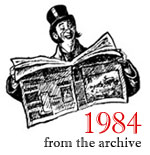The Shaping of Anglican Spiritual Expression

The Anglican Spiritual Tradition
By John R.H. Moorman
Publisher: Templegate
Pages: 228
Price: $10.95
Review Author: Isabel Anders
The Anglican Spiritual Tradition is both Catholic and Protestant. It is Catholic first of all in its forms of worship. “Anglican worship,” wrote Evelyn Underhill, “is a special development of the traditional Christian culture, and not merely a variant of continental Protestantism.” That is to say that it keeps a fixed liturgy, allowing no place for extemporary prayer or self-devised services of praise and preaching such as are common in nonconformist bodies. It is Catholic also in its maintenance of the threefold ministry of bishops, priests and deacons.
John R.H. Moorman, retired Church of England Bishop of Ripon, goes on to quote Underhill again:
The student of Anglicanism can find there a complete Evangelicalism: grave, Biblical, prophetic, devoted, based on preaching of the Word, suspicious of ceremonies, acts and signs, emphasising the personal relation of the soul to God, greatly concerned with man and his needs. At the same time he can find a sacramental, objective, theocentric worship, emphasising holiness, authority and the total action of the Church, her call to adoration and vocation of sacrifice.
In this book, which traces the shaping of Anglican spiritual expression since the Reformation, one finds “all of the above” in various degrees of compatibility and contradiction, ease and disease, turmoil and agreeable diversity.
In a fascinating prologue, Moorman tells the story of a fictitious English priest ordained in 1524 during the reign of King Henry VIII. The Rev. “James Whyte” of Essex is destined to live through serious changes in the Church he knows and serves during the course of his ministry: the act of separation of the Church of England from Rome, the command for each parish church to set up a Bible in English (although few in his parish are able to read), the Statute of Six Articles in 1539 (which gives false hope that the King does not intend to change the church life of the people).
Then, at the end of January 1547, when news reaches him of the King’s death, and the succession of his nine-year-old son (under the advisorship of the Protectors), the real changes begin to occur. Within 10 years (1549-1559), the Rev. Whyte will be forced to undergo four official major reversals, back and forth from Protestant and Catholic poles, which will affect the forms of public worship, the appearance of his Church, his own vestments, and the sermons and teaching he will be required to pass on to his flock. But in the process, meaningful changes occur.
This story gives a taste of the beginnings of the Church of England’s long and complicated spiritual windings. In the succeeding chapters, Moorman covers the historical track of Anglican names and places and issues (with an emphasis on the implications for individual and corporate worship, and devotional life), the development of the Book of Common Prayer, and the place of the English Bible in the Church. He looks at developing hymnody and its influence on worship, the spiritual and apologetic writings that grew out of the Church’s life, and the individuals who helped shape the Church in their time and for our time.
In the constant attempt to define the nature of this Church, to balance its catholicity against its reformed tendencies, many writers have struggled with fine distinctions — such as John Whitgift, who wrote about the nature of the Anglican Church (1573, 1574) and its worship:
That no ceremony, order, discipline or kind of government may be in the Church, except the same be expressed in the Word of God, is a great absurdity and breedeth many inconveniences.
Whitgift, Master of Trinity College, Cambridge, was answering the attacks on Rome by another Anglican writer, John Jewel (b. 1522), whose Apology, rather than defending Canterbury, sought to exclude Rome. Whitgift was called upon in true Anglican fashion to build bridges, to answer the points of Puritans, yet also to avoid being reactionary — to help preserve by his language the spirit, ethos, and practicality of developing Anglicanism. He appealed to reasonable minds, supported the inevitable development of doctrine and liturgy that is the legacy of the Church, and in his voluminous writings he stated the Anglican view of the nature of the Church, its government, worship, and customs, and helped preserve — as Anglicans call it — the English branch of catholic expression of the faith. Through writers, preachers, proclaimers of the Word such as Whitgift — more and less well known — the Anglican Church survives today, its spirituality (in the words of Martin Thornton):
sane, wise, ancient, modern, sound, and simple; with roots in the New Testament and the Fathers, and of noble pedigree; with its golden periods and its full quota of saints and doctors; never obtrusive, seldom in serious error, ever holding its essential place within the glorious diversity of Catholic Christendom.
©1984 New Oxford Review. All Rights Reserved.
You May Also Enjoy
The recent history of the Anglican Communion shows that shedding virtually all of its distinctively Christian moral teachings in order to achieve "relevance" has disastrous results.
Let Rome be Rome, and let the ecumenical chips fall where they may.
Just when we were beginning to think that things couldn't get any more schizoid in the Anglican Communion, things are getting, well, more schizoid.

